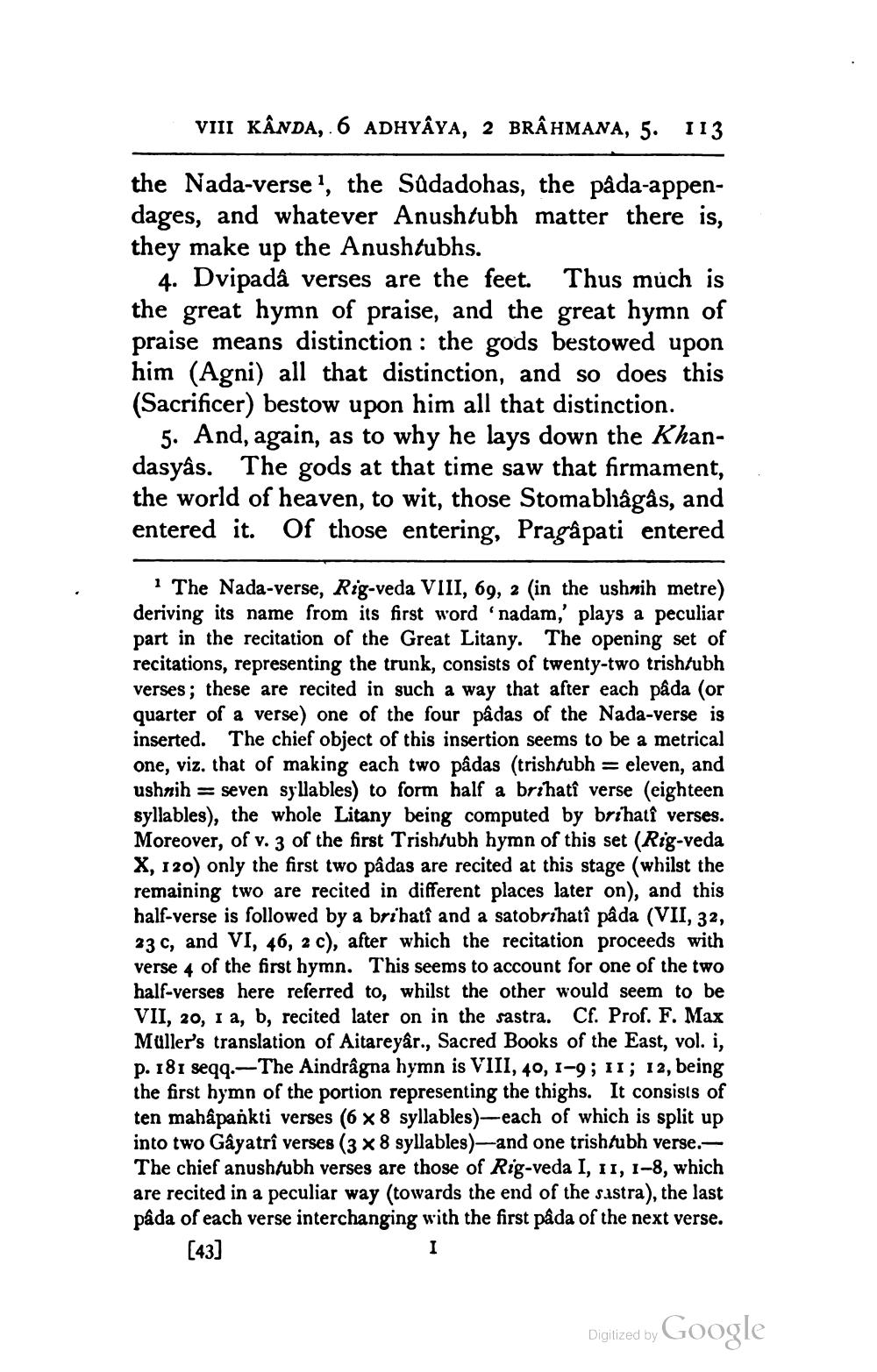________________
VIII KÂNDA, 6 ADHYAYA, 2 BRÂHMANA, 5. 113
the Nada-verse', the Sadadohas, the pâda-appendages, and whatever Anushtubh matter there is, they make up the Anushtubhs.
4. Dvipada verses are the feet. Thus much is the great hymn of praise, and the great hymn of praise means distinction: the gods bestowed upon him (Agni) all that distinction, and so does this (Sacrificer) bestow upon him all that distinction.
5. And, again, as to why he lays down the Khandasyâs. The gods at that time saw that firmament, the world of heaven, to wit, those Stomabhâgås, and entered it. Of those entering, Pragâpati entered
i The Nada-verse, Rig-veda VIII, 69, 2 (in the ushnih metre) deriving its name from its first word 'nadam,' plays a peculiar part in the recitation of the Great Litany. The opening set of recitations, representing the trunk, consists of twenty-two trishtubh verses; these are recited in such a way that after each pâda (or quarter of a verse) one of the four pâdas of the Nada-verse is inserted. The chief object of this insertion seems to be a metrical one, viz. that of making each two padas (trishtubh = eleven, and ushnih = seven syllables) to form half a brihatî verse (eighteen syllables), the whole Litany being computed by brihati verses. Moreover, of v. 3 of the first Trish/ubh hymn of this set (Rig-veda X, 120) only the first two pâdas are recited at this stage (whilst the remaining two are recited in different places later on), and this half-verse is followed by a brihatî and a satobrihatî pâda (VII, 32, 23 C, and VI, 46,2 c), after which the recitation proceeds with verse 4 of the first hymn. This seems to account for one of the two half-verses here referred to, whilst the other would seem to be VII, 20, I a, b, recited later on in the sastra. Cf. Prof. F. Max Muller's translation of Aitareyâr., Sacred Books of the East, vol. i, p. 181 seqq.-The Aindragna hymn is VIII, 40, 1-9; 11; 12, being the first hymn of the portion representing the thighs. It consists of ten mahapankti verses (6 X 8 syllables)-each of which is split up into two Gayatrî verses (3 x 8 syllables)—and one trishtubh verse. The chief anushrubh verses are those of Rig-veda I, 11, 1-8, which are recited in a peculiar way (towards the end of the sustra), the last pâda of each verse interchanging with the first pada of the next verse.
[43]
Digilized by Google




